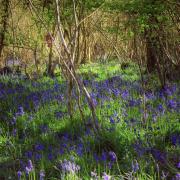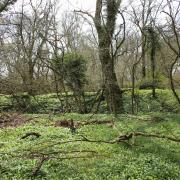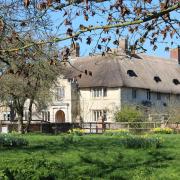This month Dorset Wildlife Trust profile the humble ladybird, a boon for any gardener and easy to identify.
Here come the ladybirds: An unmistakable sight and sound of spring's arrival is insects buzzing around your garden or local green space. One of the most identifiable is the ladybird, usually seen between March and October. What makes these small beetles a particularly cheery sight for gardeners is the ladybirds’ hearty appetite for aphids, the small sap-sucking bugs also known as greenfly or blackfly which can inhibit plant growth. Encourage ladybirds to make a home in your garden by setting up a bug hotel.
One of the most common ladybird species in Dorset (and throughout the UK) is the 7-spot ladybird. Adults sport the well-known pattern, red with the seven black spots dotted across the wing cases on their backs. Some adults may cluster together to hibernate in hollow plant stems between November and February.
Another common species is the 2-spot ladybird. Often red with two black spots, they can have several different colour combinations, including black with red spots. This species is most likely to be found hibernating indoors over winter, sometimes huddled in groups, or hibernating outdoors under tree bark. There is also a 10-spot ladybird, which doesn’t always have 10 spots, but it does have yellow legs while other common ladybirds have black legs. Find out more about Dorset’s various types of ladybirds and other amazing beetles, at dorsetwildlifetrust.org.uk/beetles.

Action for Insects: Hopefully ladybirds will be in your garden, allotment or local green space this spring, but the decline in insect numbers is a serious cause for concern. An estimated 41% of insect species face extinction. Insects pollinate a third of our food crops and are a main food source for many birds, small mammals and fish, so we all need to take action in our garden or local community spaces to help insect populations recover. Find out what you can do at dorsetwildlifetrust.org.uk/action-insects

Ladybird lifecycle: The are four phases to a ladybird lifecycle: In May, ladybirds mate, and the eggs are laid in batches of up to 40 eggs on a leaf between June and July; these hatch into a larval stage, during which the larva undergoes a series of moults concluding in a pupa, in which the larva develops into an adult. The new generation of ladybirds emerge in August to feed, they overwinter and mate in the spring.

Don't eat me! Ladybirds’ brightly coloured bodies warn predators that they won’t taste good so are best left alone, but this doesn’t always work – some birds, spiders and predatory beetles will try to eat them anyway. Helpfully, the ladybird’s defences go beyond their warning colours, they release a strong-smelling, yellow substance full of toxic alkaloids from their joints when picked up. However, some birds which feed on the wing, such as swifts and swallows, are immune to the defensive chemicals of ladybirds.



























